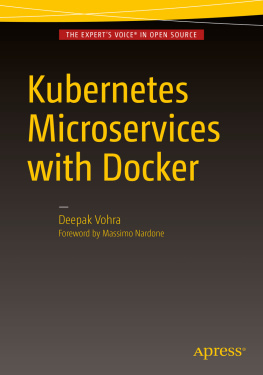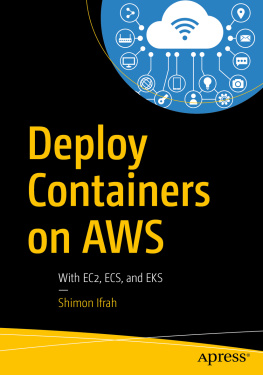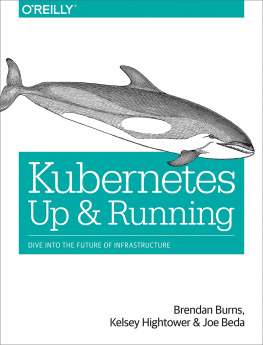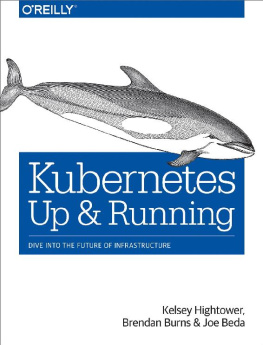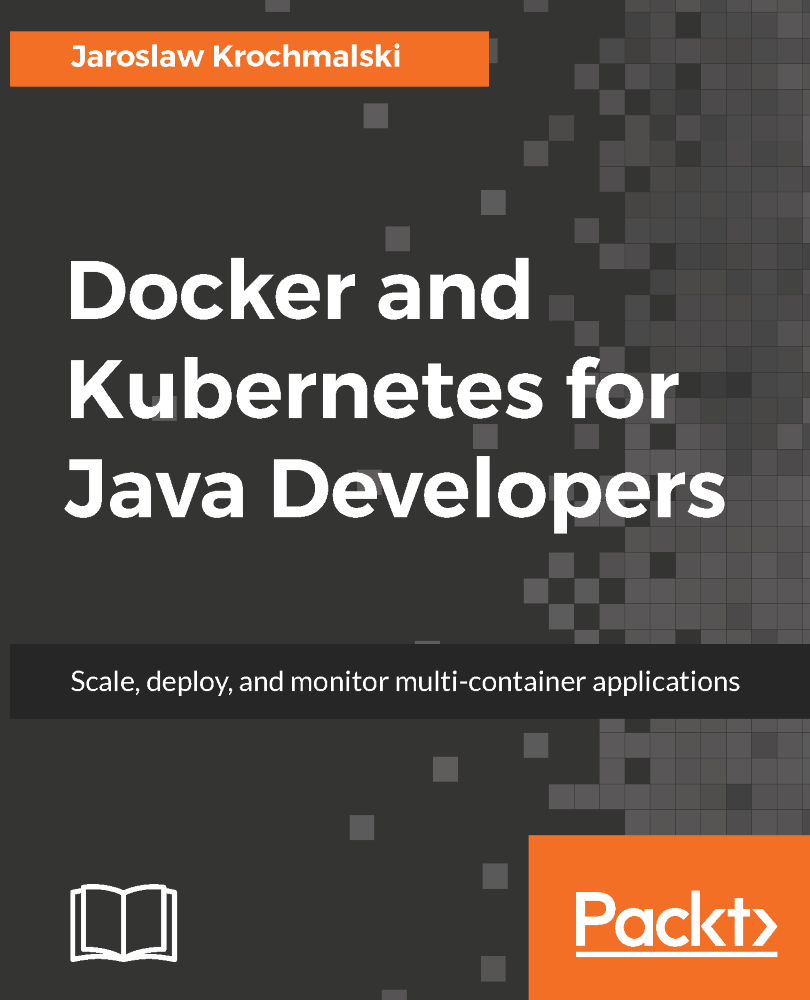
Docker and Kubernetes for Java Developers
Scale, deploy, and monitor multi-container applications
Jaroslaw Krochmalski
BIRMINGHAM - MUMBAI
Docker and Kubernetes for Java Developers
Copyright 2017 Packt Publishing
All rights reserved. No part of this book may be reproduced, stored in a retrieval system, or transmitted in any form or by any means, without the prior written permission of the publisher, except in the case of brief quotations embedded in critical articles or reviews.
Every effort has been made in the preparation of this book to ensure the accuracy of the information presented. However, the information contained in this book is sold without warranty, either express or implied. Neither the author(s), nor Packt Publishing, and its dealers and distributors will be held liable for any damages caused or alleged to be caused directly or indirectly by this book.
Packt Publishing has endeavored to provide trademark information about all of the companies and products mentioned in this book by the appropriate use of capitals. However, Packt Publishing cannot guarantee the accuracy of this information.
First published: August 2017
Production reference: 1240817
Published by Packt Publishing Ltd.
Livery Place
35 Livery Street
Birmingham
B3 2PB, UK.
ISBN 978-1-78646-839-0
www.packtpub.com

Credits
Author Jaroslaw Krochmalski | Copy Editor Safis Editing |
Reviewer Pierre Mavro | Project Coordinator Kinjal Bari |
Commissioning Editor Vijin Boricha | Proofreader Safis Editing |
Acquisition Editor Prachi Bisht | Indexer Mariammal Chettiyar |
ContentDevelopmentEditor Trusha Shriyan | Graphics Kirk D'Penha |
Technical Editor Varsha Shivhare | Production Coordinator Shantanu Zagade |
About the Author
Jaroslaw Krochmalski is a passionate software designer and developer who specializes in the financial domain. He has over 12 years of experience in software development. He is a clean-code and software craftsmanship enthusiast. He is a certified scrum master and a fan of Agile. His professional interests include new technologies in web application development, design patterns, enterprise architectures, and integration patterns.
He has been designing and developing software professionally since 2000 and has been using Java as his primary programming language since 2002. In the past, he has worked for companies such as Kredyt Bank (KBC) and Bank BPS on many large-scale projects, such as international money orders, express payments, and collection systems. He currently works as a consultant at Danish company 7N as an infrastructure architect for the Nykredit bank. You can reach him via Twitter at @jkroch or by email at jarek@finsys.pl.
About the Reviewer
Pierre Mavro lives in a suburb of Paris. He's an open source software lover and has been working with Linux for more than 10 years now. Currently, he is working as a lead SRE at Criteo, where he manages distributed systems and NoSQL technologies. During the last few years, he has been designing high-availability infrastructures, public and private cloud infrastructures, and worked for a high-frequency trading company. He also wrote a book on MariaDB named MariaDB High Performance. Hes also one of the co-founders of Nousmotards, an application for riders.
www.PacktPub.com
For support files and downloads related to your book, please visit www.PacktPub.com . Did you know that Packt offers eBook versions of every book published, with PDF and ePub files available? You can upgrade to the eBook version at www.PacktPub.com and as a print book customer, you are entitled to a discount on the eBook copy. Get in touch with us at service@packtpub.com for more details. At www.PacktPub.com, you can also read a collection of free technical articles, sign up for a range of free newsletters and receive exclusive discounts and offers on Packt books and eBooks.

https://www.packtpub.com/mapt
Get the most in-demand software skills with Mapt. Mapt gives you full access to all Packt books and video courses, as well as industry-leading tools to help you plan your personal development and advance your career.
Why subscribe?
- Fully searchable across every book published by Packt
- Copy and paste, print, and bookmark content
- On demand and accessible via a web browser
Customer Feedback
Thanks for purchasing this Packt book. At Packt, quality is at the heart of our editorial process. To help us improve, please leave us an honest review on this book's Amazon page at https://www.amazon.com/dp/1786468395.
If you'd like to join our team of regular reviewers, you can e-mail us at customerreviews@packtpub.com. We award our regular reviewers with free eBooks and videos in exchange for their valuable feedback. Help us be relentless in improving our products!
Preface
Imagine creating and testing Java EE applications on Apache Tomcat or Wildfly in minutes, along with deploying and managing Java applications swiftly. Sounds too good to be true? You have a reason to cheer, because such scenarios are possible by leveraging Docker and Kubernetes.
This book will start by introducing Docker and delve deep into its networking and persistent storage concepts. You will be then introduced to the concept of microservices and learn how to deploy and run Java microservices as Docker containers. Moving on, the book will focus on Kubernetes and its features. You will start by running the local cluster using Minikube. The next step will be to deploy your Java service in the real cloud, on Kubernetes running on top of Amazon AWS. At the end of the book, you will get hands-on experience of some more advanced topics to further extend your knowledge of Docker and Kubernetes.
What this book covers
, Introduction to Docker, introduces the reasoning behind Docker and presents the differences between Docker and traditional virtualization. The chapter also explains basic Docker concepts, such as images, containers, and Dockerfiles.
, Networking and Persistent Storage, explains how networking and persistent storage work in Docker containers.
, Working with Microservices, presents an overview of what microservices are and explains their advantages in comparison to monolithic architectures.
Next page



